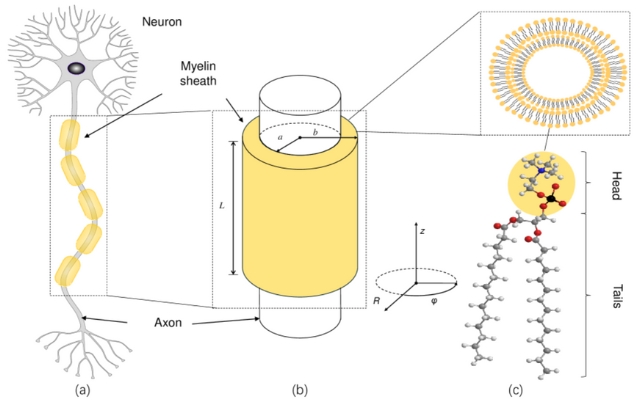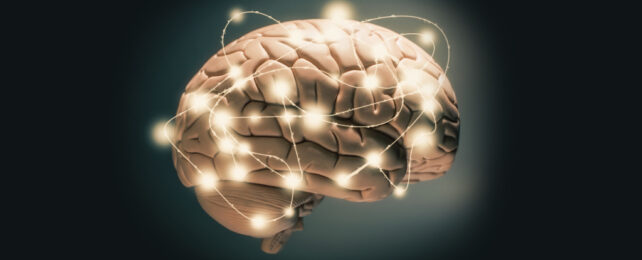A silent symphony is playing inside your brain right now as neurological pathways synchronize in an electromagnetic chorus that's thought to give rise to consciousness.
Yet how various circuits throughout the brain align their firing is an enduring mystery, one some theorists suggest might have a solution that involves quantum entanglement.
The proposal is a bold one, not least because quantum effects tend to blur into irrelevance on scales larger than atoms and molecules. Several recent findings are forcing researchers to put their doubts on hold and reconsider whether quantum chemistry might be at work inside our minds after all.
In their new published paper, Shanghai University physicists Zefei Liu and Yong-Cong Chen and biomedical engineer Ping Ao from Sichuan University in China explain how entangled photons emitted by carbon-hydrogen bonds in nerve cell insulation could synchronize activity within the brain.
Their findings come just months after another quantum phenomenon known as superradiance was identified in cellular frameworks, drawing attention to a highly speculative theory on consciousness called the Penrose-Hameroff 'orchestrated-objective reduction' model.
Proposed by the highly respected physicist Roger Penrose and the American anesthesiologist Stuart Hameroff, the model suggests networks of cytoskeleton tubules that lend structure to cells – in this case, our neurons – act as a kind of quantum computer that somehow shapes our thinking.
It's easy to see why there's an appeal in looking to quantum physics to explain consciousness. For one thing, both have a kind of 'weirdness' to them – a mix of predictability and randomness that's hard to pin down.
Then there is the perennial problem of what constitutes the pivotal observation that transforms quantum uncertainty into a classical absolute measurement. Could a quantum phenomenon in the brain be related to the collapse of a wave of probability?
On the other hand, weird plus weird doesn't equal scientific truth, no matter how incomprehensible each concept seems. Brains might not work like classical computers, but sprinkling with quantum magic is unlikely to lead to a comprehensive theory.
Scientists have had a whole other reason to staple their skeptic hat on tight when it comes to quantum theories of consciousness – the sloppy tides of biology have long been considered too chaotic, too noisy, and too 'big' for quantum mechanics to emerge in any significant way.
That part we might need to reconsider, especially if experiments can verify Liu, Chen, and Ao's prediction.
The trio notes the fatty coating called myelin around the nerve cell's axon 'tail' could conceivably serve as a suitable cylindrical cavity for the amplification of infrared photons generated elsewhere in the cell, causing carbon-hydrogen bonds to occasionally spit out pairs of photons that would have a high degree of correlation between their properties.

Movements of these entangled photons through the ionic tides of the brain's biochemistry just might drive correlations between processes that play a central role in the organ's ability to synchronize.
The word 'might' is doing some tremendous heavy lifting here, of course. While there are plenty of empirical discoveries to support details of the hypothesis, evidence of entangled photons affecting large-scale biological processes is currently limited to photosynthesis.
That doesn't mean there are zero precedents for quantum biology in animals. Mounting evidence suggests the fuzzy superposition states of electron spins in proteins called cryptochromes can be influenced by magnetic fields in a way that helps explain long-distance navigation in some animals.
We're a fair way from demonstrating anything but classical chemistry is at work inside our heads, let alone confidently proclaiming the symphonies of our brain are united by a quantum composer.
But it might be time to press pause on reservations over quantum phenomena exerting an influence over at least some of our brain's basic functions.
This research has been published in Physical Review E.
